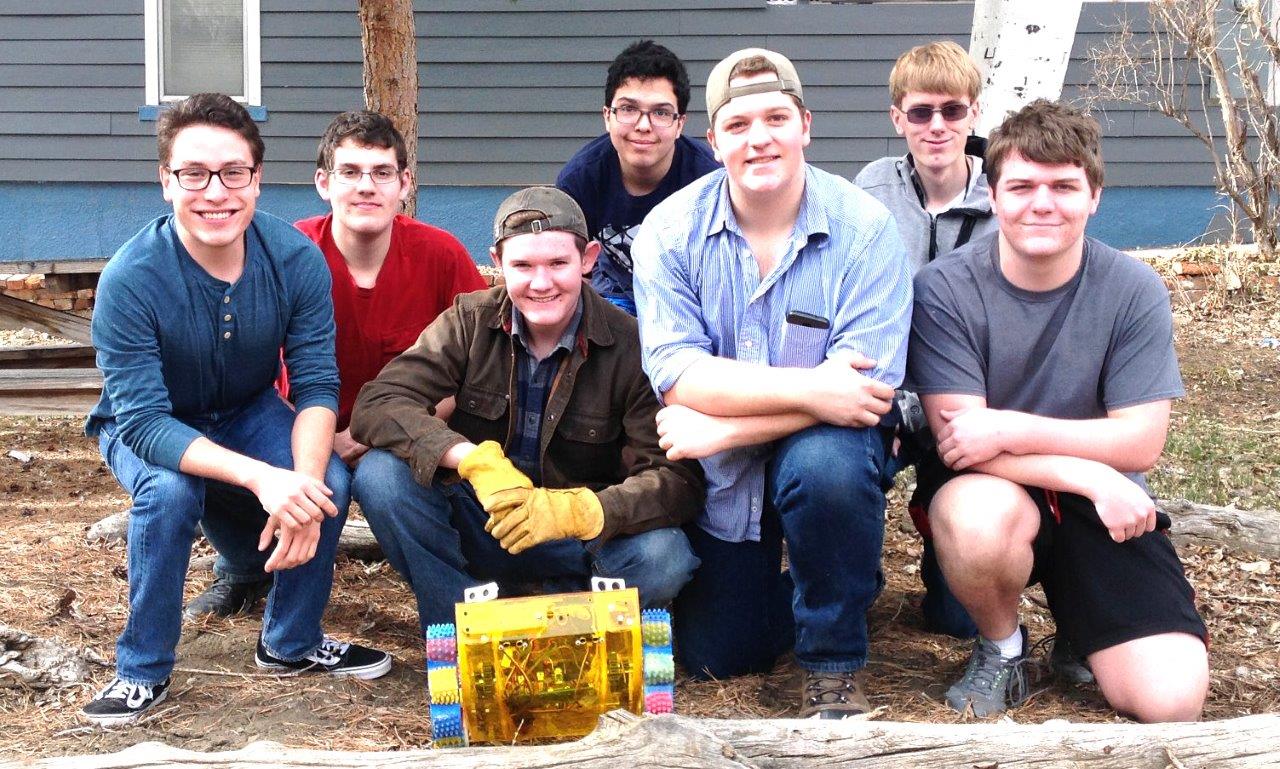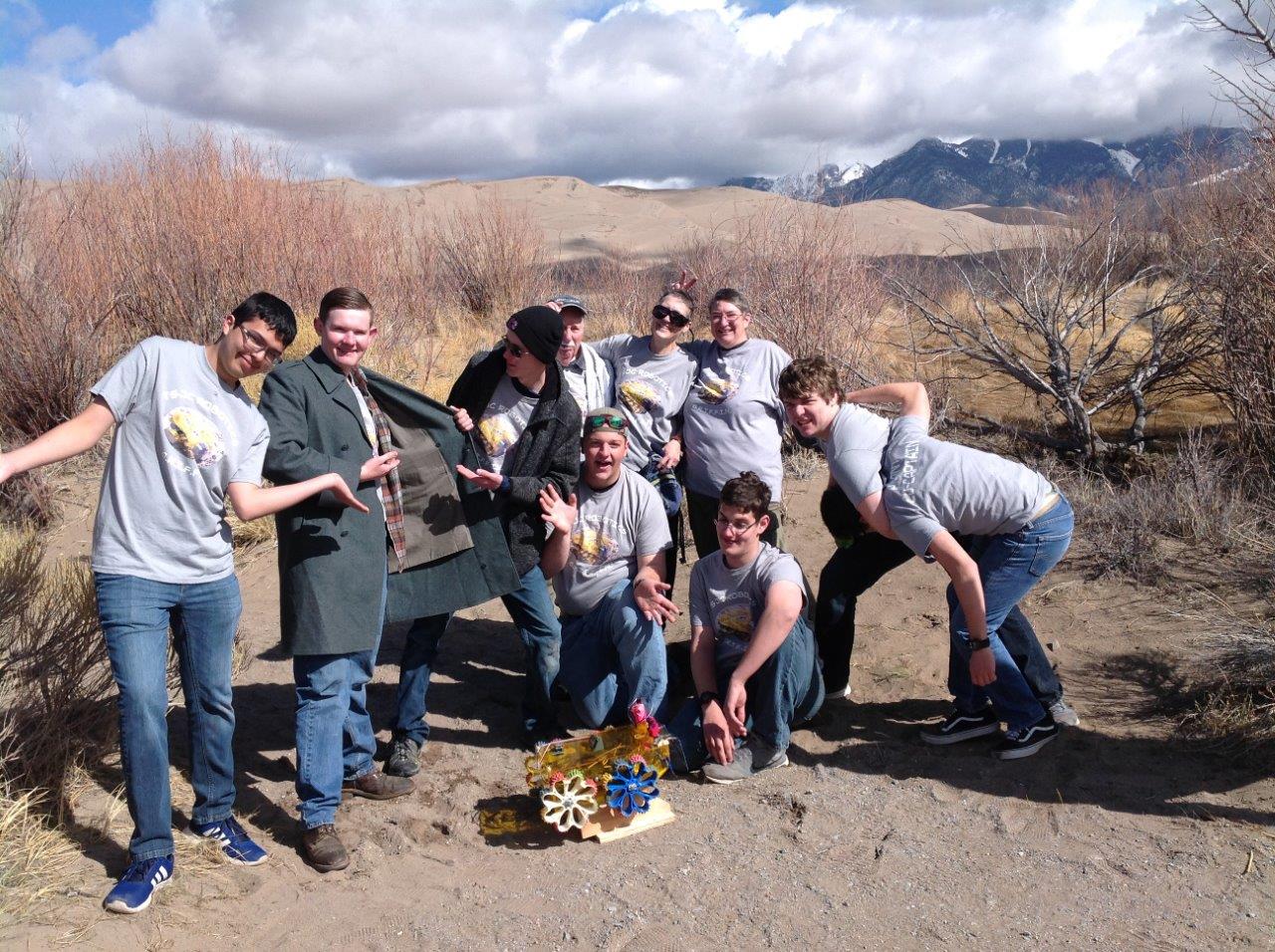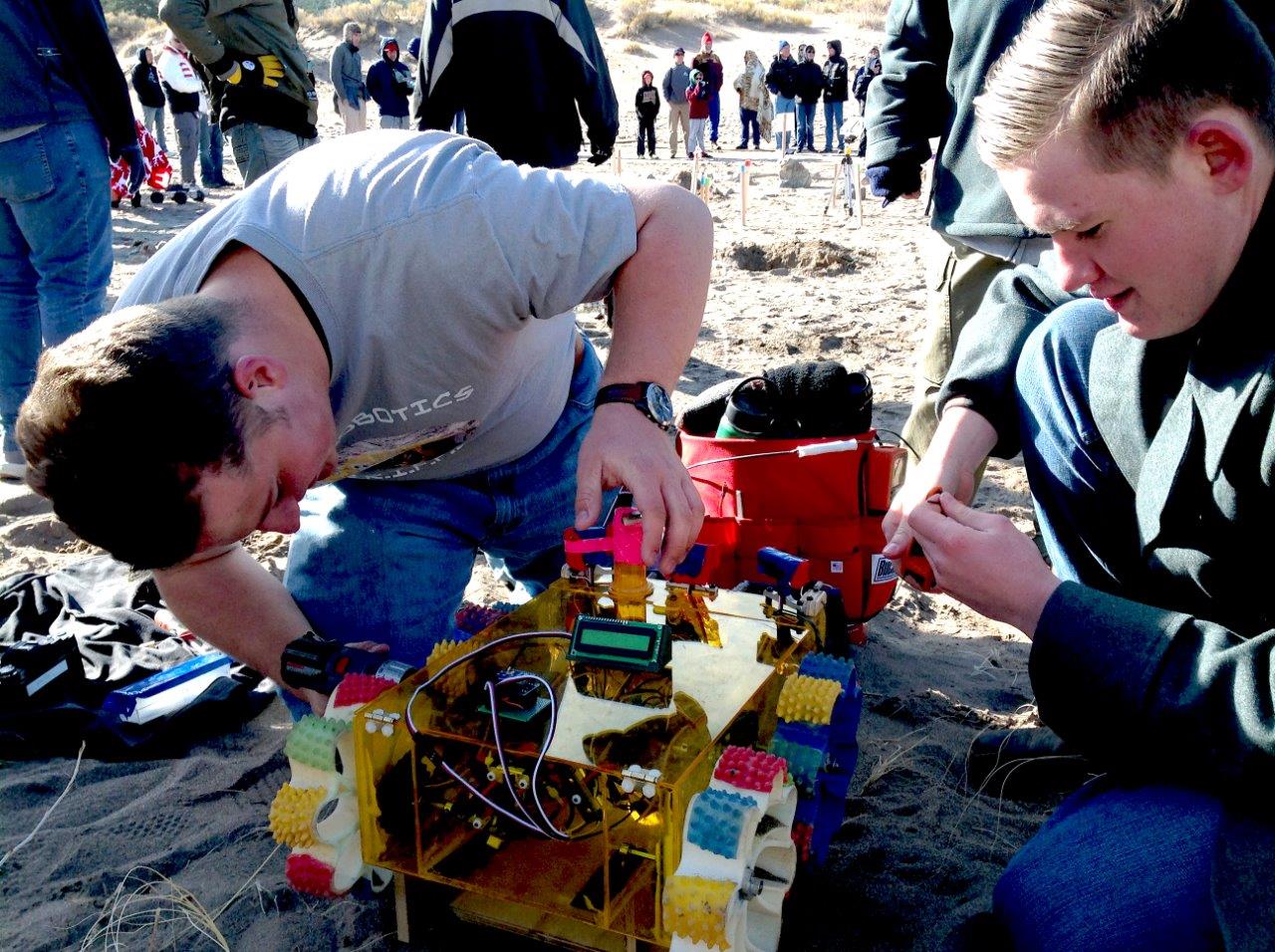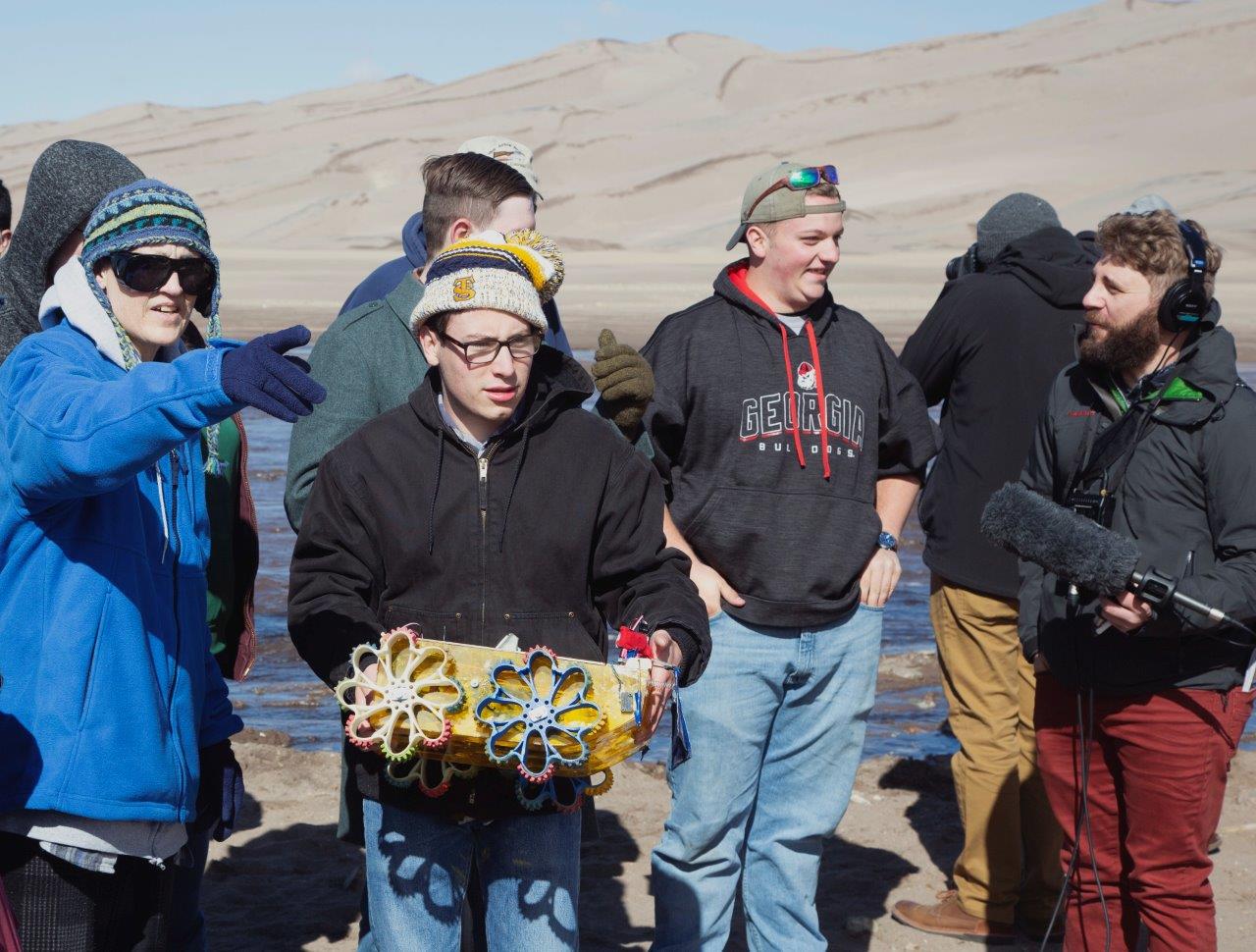May 3, 2019
Written by Margaret Sanderson
(GREAT SAND DUNES NATIONAL PARK, COLORADO) – Thirteen years ago, when the Great Sand Dunes National Park and Preserve, with its Mars-like terrain, was deemed a good site for robot practice, the Colorado Robotics Challenge was born. NASA had originally tested the Mars Viking Landers at the Sand Dunes back in the 1970s. On April 13, in freezing 19-degree windy weather, Trinidad State’s autonomous “GRIFFIN” (Golden Roaming Intelligent Fantabulous Fabricated Independent Navigator) conquered the six-course challenge. GRIFFIN navigated independently by using an array of sensors around rocks, pits or barriers to a beacon mounted on a tripod placed in the center of the approximately 40-foot diameter pie-shaped course.

Quent Lance Lusk, a 17-year-old team co-captain who has been taking college classes at Trinidad State since he was 14, said, “We had really good team cohesion (throughout the process). Most of the robots were struggling with the beacon. Our electronics didn’t fail at all.”
Unlike past years, no traditional college students were on the team. It consisted of only students coming to Trinidad State from four different high schools: Branson, Goal Academy, Hoehne and Trinidad High. The seven students were required to take Intro to Programming in the fall and then First Year Engineering Projects in the spring. Taken while in high school, students earn both high school and college credit for the same class..

After the students developed the blue print for the robot prior to the build, each team member had specific responsibilities for its construction. Lusk was one of the builders along with David Hadaway. Hadaway, a senior from Hoehne, especially enjoys the short-term summer programs offered at the college and he is interested in metallurgical engineering.
Lusk, a junior at Goal Academy this year, will complete a welding certificate in the next few weeks and will complete his associate degree before he graduates from high school next year. His sights are set on electrical and mechanical engineering.

Malachi Jones, another senior from Hoehne High School, regrets not joining the robotics team last year. “I had to learn an entire computer language over the winter so I could help program the robot. We started testing as soon as possible (during the build) and I think that is one reason GRIFFIN was so successful,” he said. Jones is interested in mathematics and aerospace and would like to get an internship and work for NASA. Programming with Jones was Tony Arant, a junior from Trinidad High who was the other co-captain. “Being in a leadership role is both fulfilling and daunting and filled with responsibility,” said Arant, who has learned the basics for many facets of robot building and wants to major in computer science. Everett Brown (Hoehne – Senior) and Zachary Tully (Branson – Sophomore) composed the electronics team and Xian Sanchez (Trinidad High – Sophomore) was their 3D designer.

The annual event is sponsored by NASA’s Colorado Space Grant Consortium (COSGC) of which Trinidad State is a member. The event was a brainchild of Adams State University which hosts a practice day for the teams in their SLV STEAM (Science, Technology, Engineering, Art and Mathematics) Shop the day before the event. Here the teams can exchange ideas and finalize their strategies. Thirty teams were entered in the event. According to Bernadette Garcia Galvez, Associate Director of COSGC and organizer of the event, GRIFFIN outperformed all other robots and was one of three to finish the course.

Although the event is not a competition, autonomous robots that performed well were recognized. GRIFFIN, named by his teenage creators, was recognized as the best performing robot over 1.5 kilograms (3.307 pounds). He weighed in at 3.98 kilograms (8.774 pounds), just a fraction under the allowable 8.8 pounds.
GRIFFIN had completed four of the six events when the organizers announced only ten minutes remained. The shallow snow-melt waters of Medano Creek had started to flow. GRIFFIN’s team chose to rush over to course six first because they were confident he could move successfully through it quickly which he did. Then they moved back to course five which had a ramp which concerned them. After GRIFFIN performed well there, the team quickly grabbed GRIFFIN and hopped on rocks back to dry sand where they watched the waters of Medano Creek obliterate the course.
When accepting students for the robotics team, motivation and time requirements are top considerations for mathematics instructor and advisor Cindy Clements. She said, “The major tasks for this challenge were building a robot that moves in the sand, that is smart enough, through its programming, to “see” and avoid obstacles, is robust enough to survive hitting rocks or falling into a pit, and is programmed to go to a specific location using a compass.”

Along with Clements, both Karen Howl and Earl Nesbitt have been advising the robotic team at Trinidad since its inception ten years ago. Howl, a local woodworker and artist who manages the tool room at the college gunsmithing program, teaches the students how to use tools and machines to bring their ideas to life. “The kids are great learners and fun to be around. It’s really been a joy,” said Howl. Nesbitt, a retired electrical engineer, said, “For me, it’s fun. I noticed that our robot was larger than many others and many weren’t avoiding obstacles like ours. I like to watch the kids learn a little bit about electronics and put their ideas to use. They’re bright kids.”
For more information about the robotics program at Trinidad State contact cynthia.clements@trinidadstate.edu









Thanks for publishing this article!
Truly appreciate it!
You’re very welcome thank you for sending us the story, awesome opportunity for our area youth!